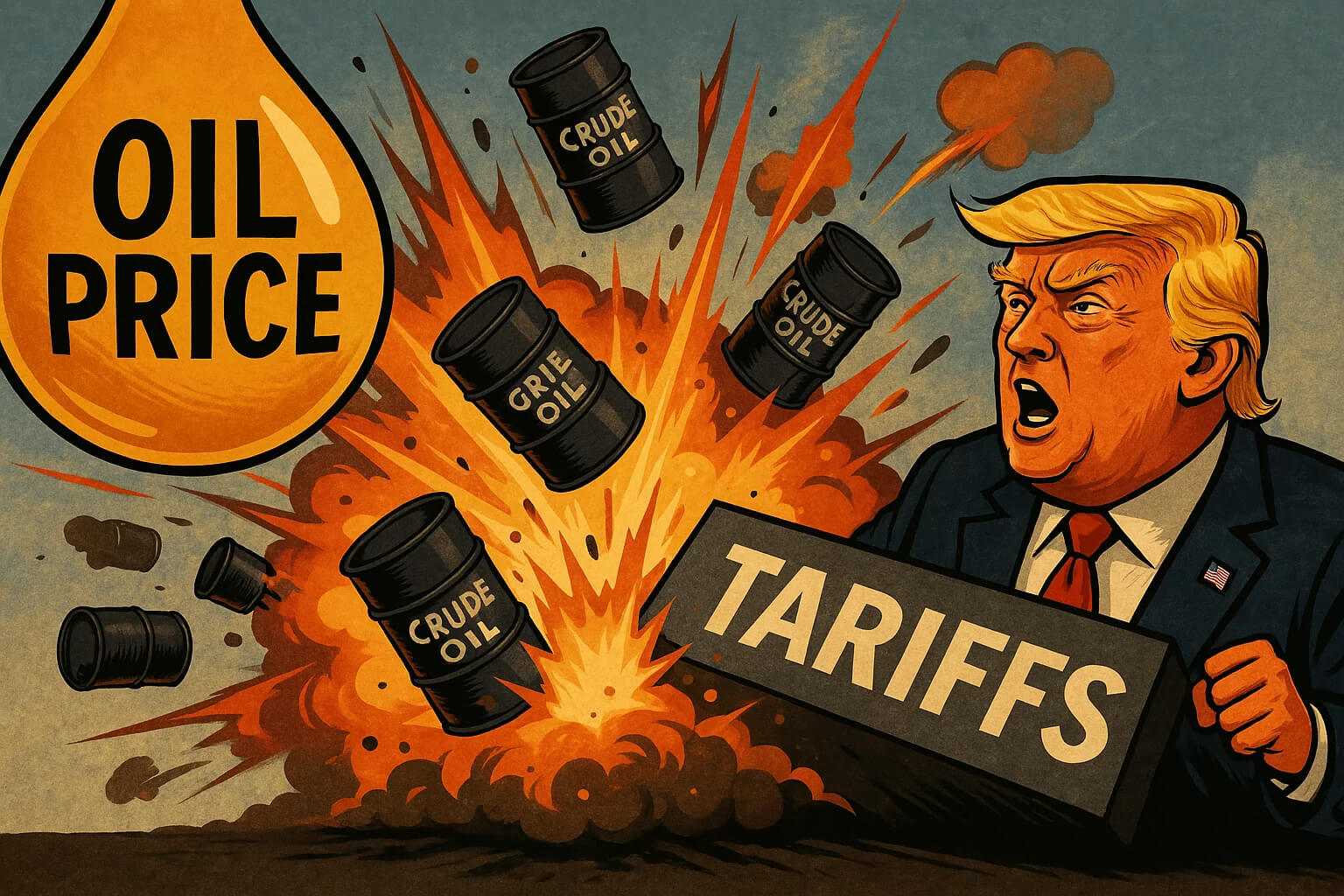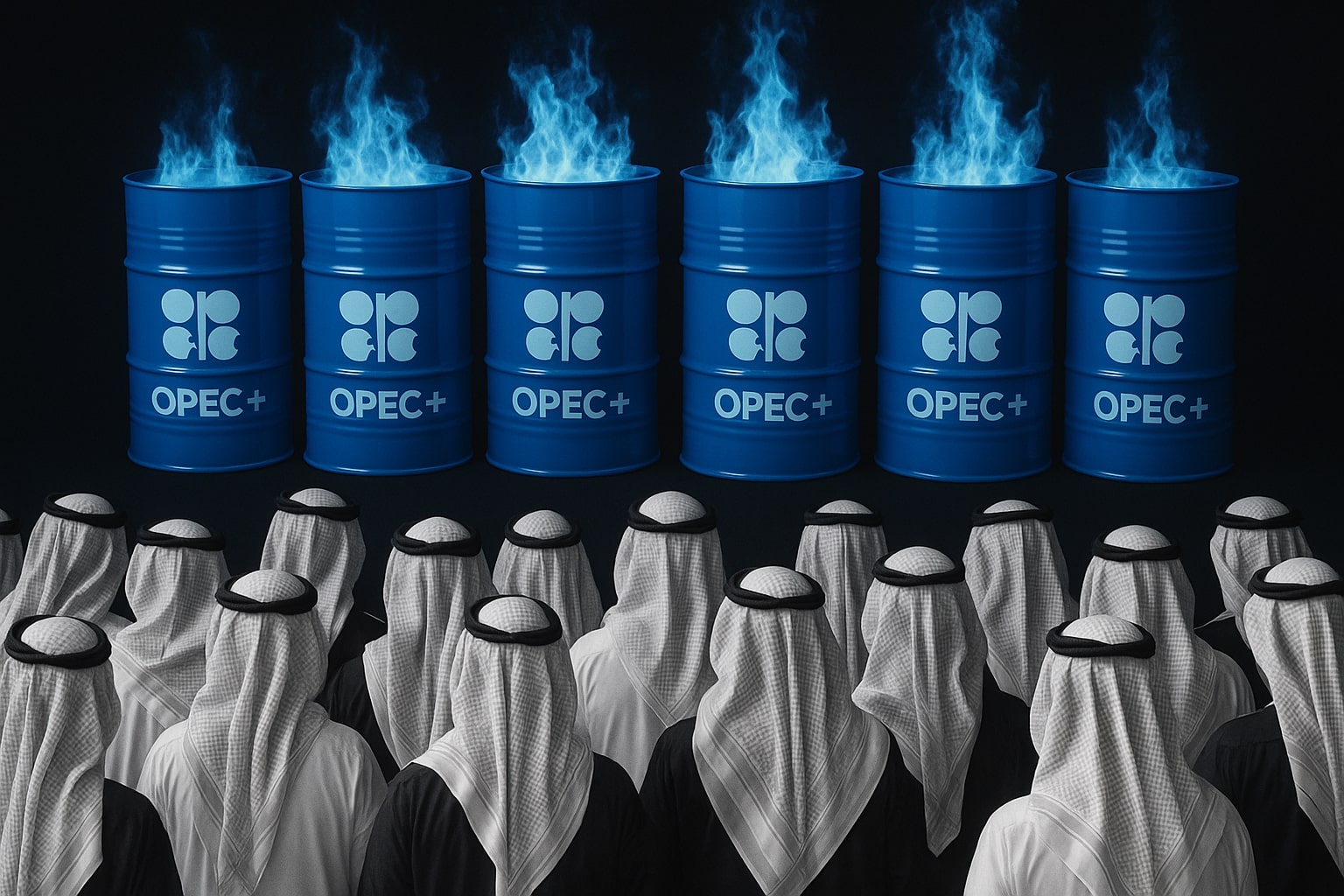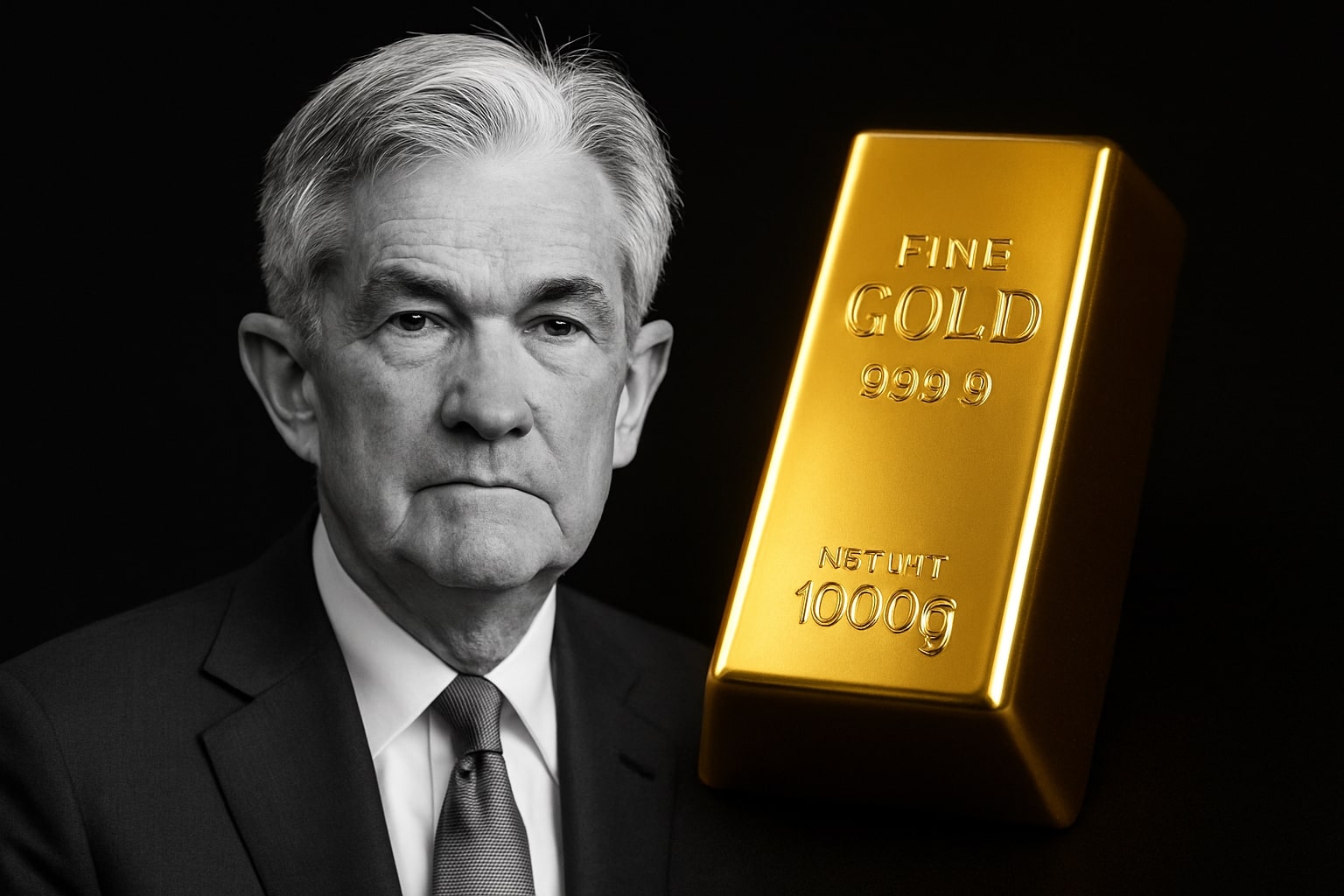
Oil Prices Plunge as Trump’s Tariffs and OPEC’s Production Surge Add Market Pressure
What impact will President Trump’s tariffs and OPEC+ production increases have on oil prices in the coming months? | That's TradingNEWS
Impact of Trump's Tariffs on Global Oil Prices
Oil Prices Plunge Amid Trade War Fears and OPEC+ Production Boost
The recent surge in trade tensions between the United States and China, exacerbated by President Donald Trump's new tariffs, has led to a significant slump in global oil prices. As of the latest market data, WTI crude oil has fallen by 6.64%, trading at $66.95 per barrel, while Brent crude has decreased by 6.42%, settling at $70.14 per barrel. These figures reflect the broader market panic caused by fears of a global recession, largely driven by escalating trade wars.
The Role of OPEC+ in Shaping Oil Prices
On April 5th, OPEC and its allies, known as OPEC+, made a controversial decision to raise their oil output by 411,000 barrels per day in May. This move was well above the expected 140,000 barrels per day increase, signaling a shift in the market dynamics. OPEC+'s move to unwind production cuts is seen as a response to global economic pressures. However, the extra supply could put further downward pressure on oil prices, which were already reeling from the trade tariff uncertainty.
Trump's Tariffs Triggering Supply Chain Disruptions
In addition to the production increase by OPEC+, the imposition of secondary tariffs on countries buying Venezuelan oil has added another layer of complexity to the market. President Trump's decision to impose a 25% tariff on Venezuelan crude is set to impact buyers globally. This move aims to reduce the flow of oil from sanctioned countries like Venezuela, Iran, and Russia, but these measures come with unintended consequences. Despite the sanctions, traders have found ways to bypass these restrictions by using intermediaries and shadow fleets, ensuring a continued flow of Venezuelan oil to Asia. This resilient trade pattern contradicts the U.S. government’s earlier statements and indicates that geopolitical tensions continue to shape the oil market in unexpected ways.
Impact on Global Demand and Supply: The Geopolitical Effect
While the tariffs on oil imports do not directly target the crude oil itself, they threaten to disrupt the global supply chain. Major oil buyers such as China, India, and other Southeast Asian countries, which heavily rely on Iranian and Venezuelan crude, are now in a precarious position. With U.S. tariffs driving these nations to reconsider their trade agreements, there is a growing possibility of reduced oil exports from these nations, which could lead to a supply shortage in the longer term. Furthermore, the growing geopolitical tensions, including Russia’s aggressive stance in Ukraine and the ongoing trade war with China, are amplifying fears of oil price instability.
The Economic Recession Fears and Their Effect on Oil Prices
The prospect of a global recession is now more pronounced as tariffs continue to roll out. With trade barriers on the rise, including China's counter-measures against U.S. goods, the economic outlook has darkened. Goldman Sachs, one of the leading financial institutions, has revised its oil price forecast downwards. It now expects WTI to average $59 per barrel and Brent to average $58 per barrel in 2026. This revision stems from the assumption that global GDP growth will be lower than previously anticipated, leading to weaker demand for oil.
Oil Price Volatility and the Future of Supply
Despite the bearish short-term outlook for oil prices, there remains a significant level of uncertainty regarding the long-term trajectory of the oil market. Oil futures have already reached levels not seen since April 2021, and OPEC+'s decision to increase production may lead to further price pressure. However, geopolitical risks, such as ongoing conflicts in the Middle East and the continued threat of sanctions on major oil producers, may prevent a sustained decline in prices. For instance, if the Trump administration escalates its tariffs on countries like China, India, and Russia, it could exacerbate the global supply disruption, pushing oil prices higher in the medium to long term.
WTI Crude Oil Price Outlook
As of the latest data, WTI crude oil is trading around $60.38 per barrel, reflecting the ongoing volatility in the market. The future of WTI prices depends heavily on the resolution of global trade tensions and OPEC+'s output decisions. If the economic slowdown continues and OPEC+ sticks to its plan of production increases, WTI could face further downward pressure. However, if geopolitical tensions escalate, leading to a reduction in global oil supplies, prices could see an uptick, despite the recessionary fears.
Saudi Arabia's Strategic Moves on Oil Pricing
Saudi Arabia, the world's top oil exporter, has significantly reduced its oil prices for May, making it the lowest in four months. This pricing adjustment came as part of OPEC's broader strategy to regain market share and respond to global economic conditions. The country slashed its official selling price for Arab Light crude by $2.30, marking the second consecutive month of price cuts. This price reduction is aimed at boosting demand in Asia, where competition from Russia and other oil exporters has been intensifying. The latest OSP for May is now set at $1.20 above the average of Oman and Dubai prices, signaling a competitive strategy in a challenging market environment.
Looking Ahead: Will Oil Prices Rebound or Continue to Slide?
The future of oil prices largely hinges on two factors: the resolution of the U.S.-China trade war and the production decisions made by OPEC+. If tariffs persist and the global economic slowdown deepens, oil demand could continue to falter. On the other hand, if the geopolitical tensions settle or if OPEC+ holds back on further production increases, there could be a supply constraint that would push prices upward. The coming months will be crucial in determining whether oil prices can recover or whether they will remain under pressure as markets brace for potential recessions globally.
In conclusion, the current oil market presents a high level of uncertainty with multiple factors at play. The geopolitical risks, especially the U.S. tariffs, are creating volatility, while OPEC+'s decisions on production cuts and increases are adding further complexity. As the global economy adjusts to these changing dynamics, investors and traders will need to stay alert to the evolving geopolitical landscape and its implications for oil prices.
That's TradingNEWS
Read More
-
SCHD ETF (NYSEARCA:SCHD) Climbs To $27.25 As Investors Flock To Dividend Stability Over Tech Volatility
12.11.2025 · TradingNEWS ArchiveStocks
-
XRPI and XRPR Jump as First U.S. XRP ETF Nears Launch With XRPC Set for Nasdaq Listing
12.11.2025 · TradingNEWS ArchiveCrypto
-
Natural Gas Price (NG=F) Steadies at $4.53 as Record LNG Exports and Rising Winter Demand Boost Market Confidence
12.11.2025 · TradingNEWS ArchiveCommodities
-
USD/JPY Price Forecast - USDJPY=X Holds At ¥154.10 As Intervention Threats And Fed Cut Expectations Drive Volatility
12.11.2025 · TradingNEWS ArchiveForex



















